Pricing Guides & Dictionary of Makers Marks for Antiques & Collectibles

ANTIQUE AND COLLECTIBLE CHANDELIERS:
A Guide to Researching Them
Join the most updated and complete collectibles research online - Learn more...
 Chandeliers have been a symbol of luxury and sophistication for centuries. These ornate light fixtures can add elegance and drama to any room, and they have been a popular choice for interior decorators and collectors alike. Antique and collectible chandeliers, in particular, are highly sought-after by enthusiasts who appreciate the craftsmanship and historical significance of these pieces.
Chandeliers have been a symbol of luxury and sophistication for centuries. These ornate light fixtures can add elegance and drama to any room, and they have been a popular choice for interior decorators and collectors alike. Antique and collectible chandeliers, in particular, are highly sought-after by enthusiasts who appreciate the craftsmanship and historical significance of these pieces.
If you are interested in antique and collectible chandeliers, it is important to know how to research them properly. This guide will provide you with some tips and resources to help you identify and evaluate these exquisite pieces.
What to Look for in Antique and Collectible Chandeliers
When it comes to antique and collectible chandeliers, there are a few key factors to consider:
- Age: Chandeliers that are over 100 years old are generally considered to be antique, while those from the mid-20th century or earlier may be classified as vintage.
- Style: Different periods and regions have distinct styles, so it is important to be familiar with the characteristics of each. Some popular styles include Art Deco, Victorian, and Rococo.
- Materials: The materials used in a chandelier can affect its value and durability. Crystal, brass, and bronze are common materials in high-quality chandeliers, while plastic or other synthetic materials may indicate a lower-quality piece.
- Condition: The condition of a chandelier is a critical factor in determining its value. Damage, missing pieces, or signs of wear can significantly reduce the value of a piece.
- Provenance: Knowing the history of a chandelier can add to its value and interest. Documentation, such as receipts or photographs, can help establish the provenance of a piece.
Where to Research Antique and Collectible Chandeliers
Fortunately, there are many resources available for researching antique and collectible chandeliers. Here are some of the best places to start:
- Antique Dealers: Visiting antique dealers and galleries can provide valuable insight into the history, style, and value of antique chandeliers. Many dealers specialize in lighting or specific styles, so be sure to find one who has expertise in the area you are interested in.
- Auctions: Auctions can be a great place to find unique and valuable chandeliers, and they also provide an opportunity to learn about the market and prices for these pieces. Many auction houses have online catalogs that allow you to research and preview items before the auction.
- Online Marketplaces: Online marketplaces, such as eBay or Etsy, can provide a vast selection of antique and collectible chandeliers from around the world. However, it is important to be cautious when purchasing from these sources, as there may be fraudulent or mislabeled items.
- Books and Magazines: There are many books and magazines dedicated to antique and collectible lighting, which can provide information about the history, styles, and value of chandeliers. Some popular titles include "Chandeliers: From the Middle Ages to the Present Day" by Joachim Baumann and "Antique Trader Lamps & Lighting Price Guide" by Kyle Husfloen.
How to Evaluate Antique and Collectible Chandeliers
Once you have identified a chandelier that you are interested in, there are several steps you should take to evaluate its authenticity and value:
- Inspect the materials: Look closely at the materials used in the chandelier, such as the crystal or metal. High-quality chandeliers will have materials that are consistent with the style and period of the piece. Look for signs of wear, damage, or replacement parts, which can indicate that the chandelier has been restored or altered.
- Check the wiring and electrical components: If the chandelier is wired for electricity, make sure that the wiring and electrical components are in good condition and up to code. Older chandeliers may need to be rewired or refurbished to meet modern safety standards.
- Research the maker or manufacturer:
- If possible, research the maker or manufacturer of the chandelier to learn more about its history and value. Look for any identifying marks or labels on the piece, such as a signature or stamp. You can also consult reference books or online resources to learn more about the maker or manufacturer.
- Compare prices:
- Once you have gathered information about the chandelier, compare prices to similar pieces in the market. Consider factors such as age, style, materials, and condition when evaluating the value of the chandelier. Auction prices and dealer prices can also provide a good benchmark for determining value.
- Consult an expert:
- If you are unsure about the value or authenticity of a chandelier, it may be helpful to consult an expert in antique lighting. A professional appraiser or dealer can provide a detailed evaluation and help you determine the best course of action for buying or selling the piece.
Conclusion
Antique and collectible chandeliers are exquisite pieces that can add elegance and sophistication to any space. However, it is important to research these pieces carefully to ensure that you are getting a high-quality and authentic piece. By considering factors such as age, style, materials, condition, and provenance, and using resources such as antique dealers, auctions, online marketplaces, books, and expert appraisers, you can make informed decisions about buying and selling antique and collectible chandeliers.
Unlock the true value of your collection with our comprehensive research guides from identifying makers' marks to appraising all kinds of antiques and collectibles, including items featured in this article.
Our up-to-date information will give you an accurate understanding of your items' worth. Don't miss out on this valuable resource - visit our research tools today!
In addition to some examples shown below on this page, you can also search our price guide for your own treasures.
Examples of related items from our Price Guides
-
 PINEAPPLE METAL CHANDELIER AND CHINOISER
[more like this]
PINEAPPLE METAL CHANDELIER AND CHINOISER
[more like this]
-
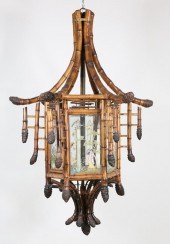 CHINOISERIE BAMBOO PAGODA FORM CHANDELIE
[more like this]
CHINOISERIE BAMBOO PAGODA FORM CHANDELIE
[more like this]
-
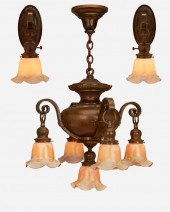 A PATINATED BRONZE CHANDELIER WITH SCONC
[more like this]
A PATINATED BRONZE CHANDELIER WITH SCONC
[more like this]
-
 Vintage Empire Style 6 Light Chandelier
[more like this]
Vintage Empire Style 6 Light Chandelier
[more like this]
-
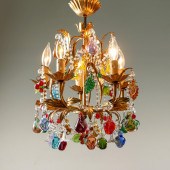 VENETIAN GLASS FRUIT CHANDELIER: 5 light
[more like this]
VENETIAN GLASS FRUIT CHANDELIER: 5 light
[more like this]
-
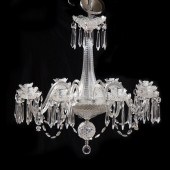 WATERFORD CRYSTAL COLORLESS EIGHT LIGHT
[more like this]
WATERFORD CRYSTAL COLORLESS EIGHT LIGHT
[more like this]
-
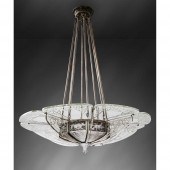 ? ‡ ‡ RENé LALIQUE (FRENCH 1860-1945)
LA
[more like this]
? ‡ ‡ RENé LALIQUE (FRENCH 1860-1945)
LA
[more like this]
-
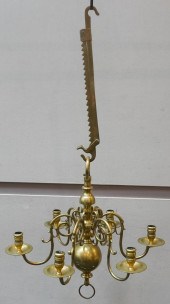 DUTCH ROCOCO STYLE SOLID BRASS FIVE-LIGH
[more like this]
DUTCH ROCOCO STYLE SOLID BRASS FIVE-LIGH
[more like this]
-
 ARTEMIDE "LOGICO" CHANDELIER CHANDELIER:
[more like this]
ARTEMIDE "LOGICO" CHANDELIER CHANDELIER:
[more like this]
-
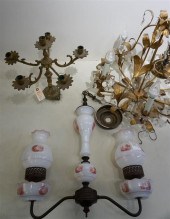 ROCOCO STYLE GILT METAL FIVE-LIGHT CHAND
[more like this]
ROCOCO STYLE GILT METAL FIVE-LIGHT CHAND
[more like this]
-
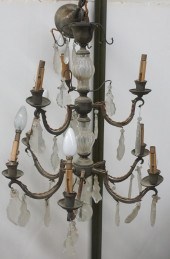 LOUIS XV STYLE BRASS SIX-LIGHT CHANDELIE
[more like this]
LOUIS XV STYLE BRASS SIX-LIGHT CHANDELIE
[more like this]
-
 COLLECTION OF ASSORTED GLASS CHANDELIER
[more like this]
COLLECTION OF ASSORTED GLASS CHANDELIER
[more like this]
There are many more auction results available to our members...





